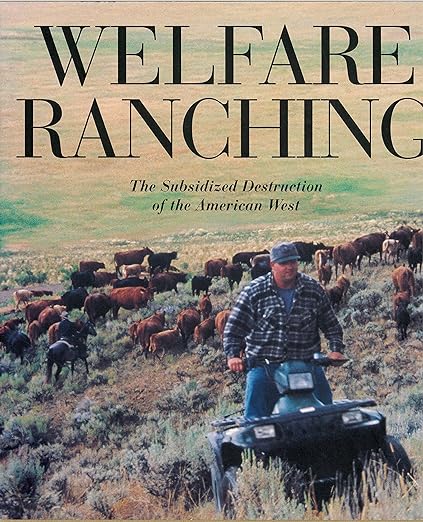livestock
-
The seminal work on public lands livestock grazing and its web of impacts, Welfare Ranching – The Subsidized Destruction of the American West is now available for download.
-
Grayling possess a large dorsal fin, and depend on cold, clear water for survival. Photo George Wuerthner In 1991, I, with the help of Jasper Carlton at the Biodiversity Legal Foundation, petitioned the U.S. Fish and Wildlife Service (FWS) to list the Arctic Grayling (sometimes called Montana Grayling) under the Endangered Species Act. My petition…
-
Author’s note. I wrote this piece several decades ago, but never published. Although some of the references may be outdated, the general theme of the article is still valid today. The main conclusion is that Agriculture is the biggest source of biological impoverishment and your food choices can do more for the environment than just…
-
The Upper Green River alloment and Wind River Range beyond. Photo George Wuerthner The Upper Green River near Pinedale, Wyoming under the administration of the Bridger Teton National Forest (BTNF) is one of the most biologically important areas of the entire Greater Yellowstone Ecosystem. Anyplace else, the Upper Green would be set aside as…
-
The 1988 Fires burned approximately half of Yellowstone National Park and provided a significant natural laboratory to review the effects of wildfire on aquatic ecosystems. Photo George Wuerthner Most people assume that wildfire harms aquatic ecosystems and fisheries. But such assumptions are being challenged by new research. This narrative misleadingly portrays mixed-intensity forest fires as…
-
ABSTRACT: Livestock production occurs in all deserts (except polar deserts). In many desert areas, it is the single most significant human impact. Livestock production includes grazing plants and all associated activities to produce domestic animals. This consists of the dewatering rivers for irrigated forage crops, killing of predators and “pest” species, forage competition between native…
-
Emigrant Peak and Yellowstone River Valley. Several of the East Paradise Allotments include the Six Mile drainage which lies to the right of the peak in this photo. Photo Georger Wuerthner The Custer Gallatin National Forest (CGNF) in Montana recently completed an evaluation of six grazing allotments known as the East Paradise allotments. The…
-
Gravelly Range has extensive uplands. Photo by Ralph Maughan The Greenhorn Vegetation Managment plan calls for logging and burning thousands of acres in the spectacular Gravelly Range of Montana, primarily to benefit the local ranchers. The Gravellies occupy the western edge of what is typically recognized as the Greater Yellowstone Ecosystem. The Beaverhead Deerlodge National…
